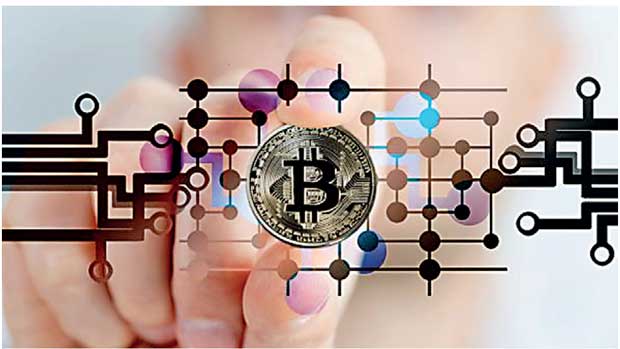06 Dec 2017 - {{hitsCtrl.values.hits}}

 For economists, blockchain technology promises frictionless markets and perfect information.
For economists, blockchain technology promises frictionless markets and perfect information.
Do you remember the world before the Internet? Can you imagine your life without it? Prepare yourself, because another revolutionary technology is about to become just as indispensable.
I’m talking about blockchain technology. Blockchain is a digital, distributed ledger that keeps a record of all transactions across participating peer-to-peer networks. It can also be understood as a decentralized database that continuously updates digital records of who owns what, which is then shared within a group or distributed publicly.
It is clear that blockchain is the next generation of the Internet. Starting out as interconnected networks for information sharing, the Internet grew to connect people for greater collaboration and knowledge sharing by providing access to endless data and information.
Blockchain adds another layer by allowing exchange and storage of “value”. By enabling authentication and nearly instant reconciliation of digital transactions, it provides a platform for creating a market (rather than just for exchange of information) between two or more complete strangers without mediators or central authorities.
From an economist’s point of view, the main attraction of this technology is its promise for frictionless markets and perfect information. The efficiency gains from getting rid of middlemen in all economic transactions would be huge.
Virtually all worldly transactions and contracts also have information asymmetry. What we can accomplish from removing all market frictions and information asymmetry in economic transactions would be beyond imagination.
Financial transactions are obvious sources of economic and efficiency gains for this technology. Domestic credit created by the financial sector worldwide reached US $ 140.7 trillion or 186.4 percent of global gross domestic product (GDP) in 2016.
Using the 3 percent net interest margin for all US banks, the cost of global financial intermediation can be roughly estimated at US $ 4.2 trillion. Even if blockchain technology helps reduce only 1 percent of this amount, the efficiency gains will be US $ 42 billion. Additional cost savings can come from cutting the financial costs associated with global cross-border capital flows.
For example, globally the average cost of sending remittances is over 7 percent of the amount sent. Last year, remittances sent globally reached US $ 375 billion, which makes about US $ 26 billion spent on sending the remittances. Likewise, blockchain applications can improve business processes, with dramatic increases in economic efficiency in some areas and at least modest increases in most others.
Obstacles ahead
Blockchain-based solutions to development challenges also have vast potential, precisely because developing countries face more market friction and their contracts are subject to greater information asymmetry. Some obvious examples are:
nNarrowing the credit gap for small and medium-sized enterprises.
nReducing the time and cost of cross-border payments like remittances.
nProviding a platform for secure identity and data storage, for instance in identity management and land title registration.
nMaking aid distribution and disbursement processes more efficient and transparent.
However, there are several important challenges to tackle before blockchain-based solutions can be practically considered. These involve infrastructure, the legal and institutional environment and regulation. There are also concerns about data privacy, cybersecurity and governance.
Interestingly, the key constraints to address these challenges are often beyond the scope of technology. For example, there is a perennial dilemma and tradeoff between data transparency and privacy, while data transparency through public distribution is at the core of this technology.
Even if technology can protect privacy (or personal data), for example by using encryption and cryptographic keys, we must determine what constitutes personal data, who controls it and how laws and regulations support the development of technology and innovation – all while personal data is protected. Another considerable challenge will be finding an appropriate governance structure for this very decentralized system.
Governments, the private sector, international organisations and intergovernmental agencies must take steps together to address these challenges.
nDevelop a set of principles and standards for using blockchain-technology, whether it’s for business or for development.
nCreate legal and regulatory environments that support the adoption of blockchain technology.
nBuild infrastructure such as high-speed Internet, mobile connectivity and reliable and affordable energy. Multilateral development banks can play an important role on the last point.
Finally, social acceptance and uptake are also important. Like the dotcom bubble in the 1990s, there is much hype over blockchain’s potential. But just like any new technology, blockchain applications need to stand the test of time and will experience numerous failures doing so.
We need to understand the technology better, recognizing its limitations as much as its potential. In the meantime, proper regulations and a balanced approach to the regulations are both key to managing the risks.
(Cyn-Young Park is Director for Regional Cooperation and Integration, Economic Research and Regional Cooperation Department of the Asian Development Bank)
10 Jan 2025 11 minute ago
10 Jan 2025 1 hours ago
10 Jan 2025 2 hours ago
10 Jan 2025 4 hours ago
10 Jan 2025 4 hours ago